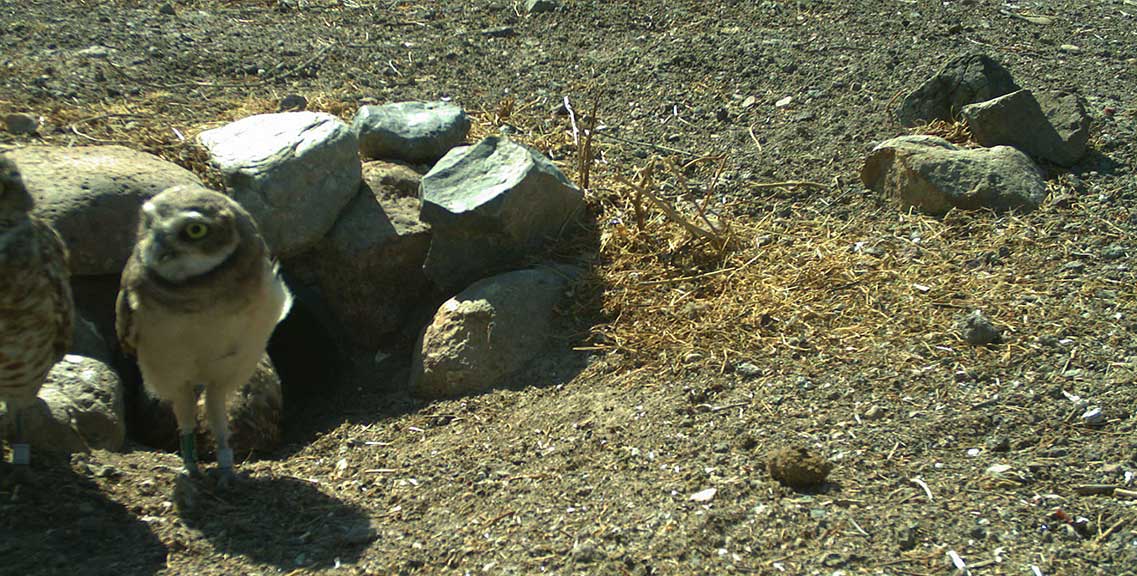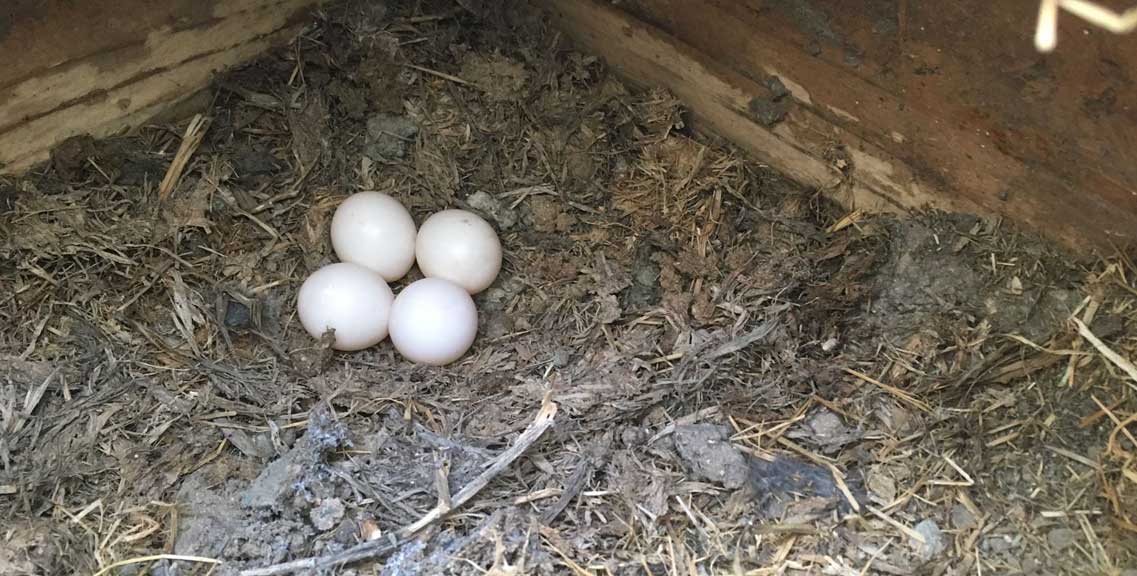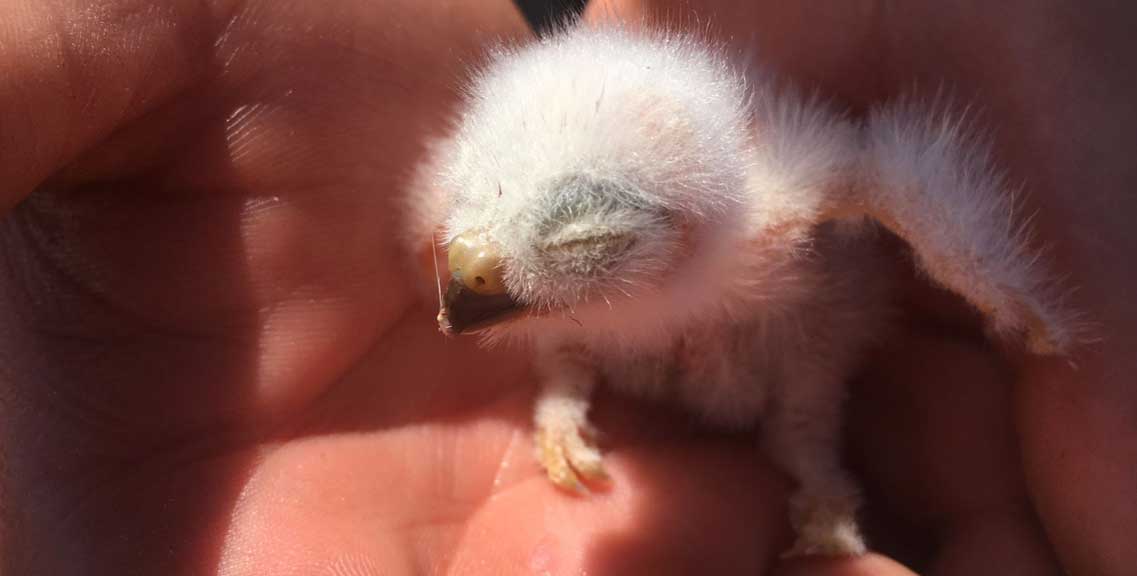Finished! Looks like this project is out of data at the moment!
Welcome! This project recently migrated onto Zooniverse’s new architecture. For details, see here.
Research

Digging Into Burrowing Owl Conservation
The western burrowing owl Athene cunicularia hypugaea in San Diego County is at risk of going locally extinct. To help reverse the decline, San Diego Zoo Wildlife Alliance's Burrowing Owl Recovery Program is working with partners on a comprehensive, multi-faceted approach to address burrowing owl ecology and conservation practices in Southern California. These efforts include reengineering habitat to make it suitable for burrowing owl colonization through providing artificial burrows that mimic natural burrows, as well as adding California ground squirrels to the landscape, which dig burrows the owls can “reuse”. Many burrowing owls have been banded for identification purposes, while some owls get tiny solar-powered GPS telemetry “backpacks” so researchers can track them over time.
One of the best ways to understand burrowing owl ecology (reproductive rates, nest success, survivorship, prey provisioning, and predation) is by setting up motion-activated field cameras outside burrowing owl dens to observe the birds’ behaviors. To give observers a clear context of the behavior, the cameras fire off three images per activation.

Burrow In
That’s where our team of citizen scientists comes in—you can help us classify burrowing owl photos, noting how many birds, ages (adult, juvenile, or fluffy chicks), activity (eating, mating, other), and prey items (as fierce little hunters, it could be anything from a grasshopper to a snake!). Other possible situations you may encounter include copulation (i.e. mating), the burrowing owls being eaten by predator species, or, on rare occasions an owl eating its young (infanticide) or its own sibling (siblicide). There may also be “visitors” at the burrow, like road runners, coyotes, or rabbits. You get to classify and decide!
When each camera is triggered, it takes 3 photos in quick succession. Each trio of images will be reviewed by 10 volunteer citizen scientists before it is “retired” from the set to ensure accuracy.

They Grow Up So Fast!
The juveniles, which we often refer to as chicks, go through a few different stages of development. When burrowing owl chicks first hatch (from eggs a little smaller than ping pong balls), they are tiny and pink with white down and closed eyes. Around 5 days of age, their eyes open and they start making a defensive vocalization that sounds like a rattlesnake rattling (it is very convincing). The chicks don’t emerge from the burrow until they are about 2 weeks old. At this point, they are gray with white down and haven’t quite grown into their beaks yet; they don’t venture far from the safety of the burrow entrance. But they grow quickly (in appearance and confidence) into the “fluffy and buffy” stage when they look like comical little pantaloon-wearing butterballs (with antics to match). The chicks practice flying (what we call helicoptering) and pouncing (on sticks, bugs, each other), and finally fledge at 41-45 days of age. They are considered to be fledged when they can sustain flight, but they benefit from a pretty long transition period to independence when they still take advantage of mom and dad for food, protection, learning important survival skills.
The fledglings retain many hallmarks of their juvenile plumage into the late summer. They slowly grow in the stripey head and breast feathers characteristic of the species, and continue to have a buff stripe on their wings as the summer is winding down. The juveniles can usually be identified from adults until the late summer/early fall molt when all of the adults replace their tattered feathers from the past year and take on a fresh, clean look.
Fun Facts
Here are a couple of fun facts to help you understand what you might see in the photos. First, male and female burrowing owls don’t have different markings or colorations, but you can usually figure out who’s who during the breeding season. Because the male spends all of his time in the sun, his feathers get bleached, while the female spends about 6 weeks almost exclusively in the burrow, which keeps her feathers dark brown. It isn’t always the case, but the female is almost always the darker-looking bird.
Second, at the beginning of the nesting period, the female lays about half of her clutch, then begins incubating while continuing to lay the rest of the eggs (she can lay one egg every 1-2 days). Once the female starts incubating, the eggs begin developing which means the first half of the clutch begins developing before the second half is even laid. This can result in the oldest chicks being up to two weeks older than the youngest, which means you might see some chicks that are much smaller than their burrow-mates.
Project Goals
The goal is to see how many chicks emerge from the burrow, how many fledge (reach 45 days of age), and how predation events impact family groups and the greater population. Our study of population dynamics in Otay Mesa is on-going, and you can help add to our understanding.
Threats from a barrage of predators as well as persistent human development encroaching on the burrowing owl’s native grassland habitat pose significate risks to these populations. The more science-based data researchers have about these endearing animals, the more effective conservation strategies can be implemented by land managers.
Your help on this project is deeply appreciated!